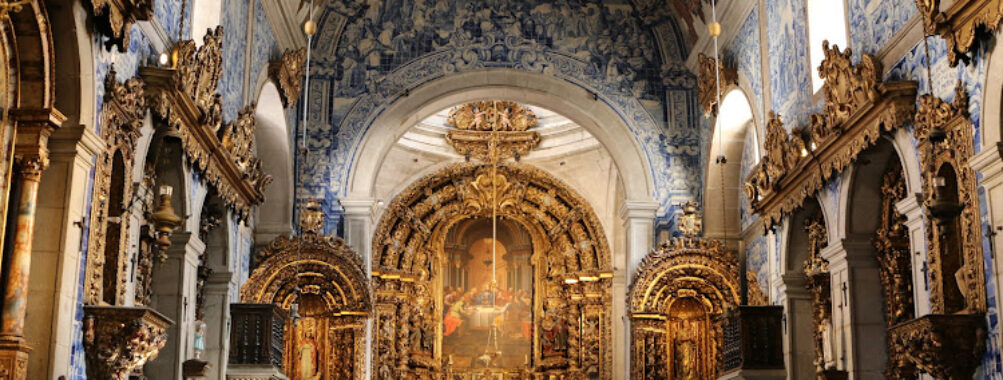
Igreja da Misericórdia (s. XVI)
Table of Contents
Description
The Igreja da Misericórdia, dating back to the 16th century, stands as a quietly powerful testament to Portugal’s rich religious and architectural heritage. This Catholic church isn’t just a pretty face; it carries centuries of stories etched into its stone walls and intricate details that often go unnoticed by the casual passerby. When you step inside, you’re not just visiting a tourist spot — you’re stepping into a slice of history where faith, art, and community intersect in ways that still resonate today.
One thing that really struck me during my visit was how accessible the church is. Wheelchair users will find both the entrance and parking thoughtfully designed, which isn’t always the case in historical sites like this. That little detail makes a big difference, especially if you’re traveling with someone who needs it or if you just appreciate places that consider all visitors.
While the exterior might seem modest compared to some grand cathedrals, don’t let that fool you. Inside, the blend of Renaissance and early Baroque influences creates an atmosphere that’s surprisingly intimate and reflective. The art and craftsmanship here whisper stories of devotion and community care—the kind of place that invites you to pause and soak it all in rather than rush through.
Visitors often remark on the calm and contemplative vibe, which is perfect if you want to escape the usual hustle of tourist hotspots. And honestly, it’s a refreshing change of pace to find a site where you can linger without feeling rushed or overwhelmed by crowds. Plus, the church’s location makes it a peaceful stop on any cultural itinerary.
Key Features
- 16th-century architecture blending Renaissance and early Baroque styles
- Rich interior artwork and religious iconography with historical significance
- Thoughtfully designed wheelchair accessible entrance and parking
- Quiet, contemplative atmosphere ideal for reflection and photography
- Well-preserved stonework and detailed carvings that tell centuries-old stories
- Close proximity to other cultural landmarks, making it easy to combine visits
- Friendly local guides often available to share lesser-known anecdotes
Best Time to Visit
If you want to avoid the typical tourist rush and really soak in the church’s atmosphere, try visiting during the shoulder seasons of spring (April to June) or early autumn (September to October). The weather is generally pleasant, and the light filtering through the stained glass windows is just magical around these times. Plus, the crowds are thinner, so you get to enjoy that peaceful vibe without elbowing your way through.
Weekdays are your best bet if you’re looking for quiet moments. Weekends tend to attract more visitors, especially locals attending services or special events, which can be a beautiful experience but might limit your personal space. Also, mornings tend to be less busy than afternoons, so if you’re an early riser, you’ll be rewarded with a serene visit.
How to Get There
Getting to Igreja da Misericórdia is pretty straightforward, whether you’re coming from the city center or further afield. If you’re relying on public transport, local buses drop you off within easy walking distance, and the area is well-signposted once you’re nearby. For those driving, the accessible parking makes it convenient, and parking spots are usually available, but during peak tourist seasons, arriving early is wise to snag a good spot.
Walking from nearby attractions is also a pleasant option, letting you soak up the local atmosphere and maybe stumble upon some quaint cafes or artisan shops along the way. If you’re like me and enjoy wandering without a strict schedule, this is a great way to add a bit of adventure to your visit.
Tips for Visiting
First off, don’t rush. The charm of Igreja da Misericórdia lies in its details—the carvings, the subtle play of light in the chapel, the quiet corners where you can just sit and think. Give yourself time to explore slowly.
Bring a camera, but be respectful of the sacred space and any services that might be happening. Sometimes, the best photos come from just observing quietly rather than posing or using flash.
If you can, try to catch a guided tour or chat with a local guide. They often share little-known stories and historical tidbits that really bring the place to life—stuff you won’t find in guidebooks.
Also, keep in mind that while the church is wheelchair accessible, some surrounding streets might be cobbled or uneven, so plan accordingly if mobility is a concern.
Lastly, consider pairing your visit with a stop at a nearby café or bakery. After soaking in centuries of history and art, nothing beats a good coffee and some local pastries to round out the experience.
Location
Places to Stay Near Igreja da Misericórdia (s. XVI)
Find and Book a Tour
Explore More Travel Guides
No reviews found! Be the first to review!